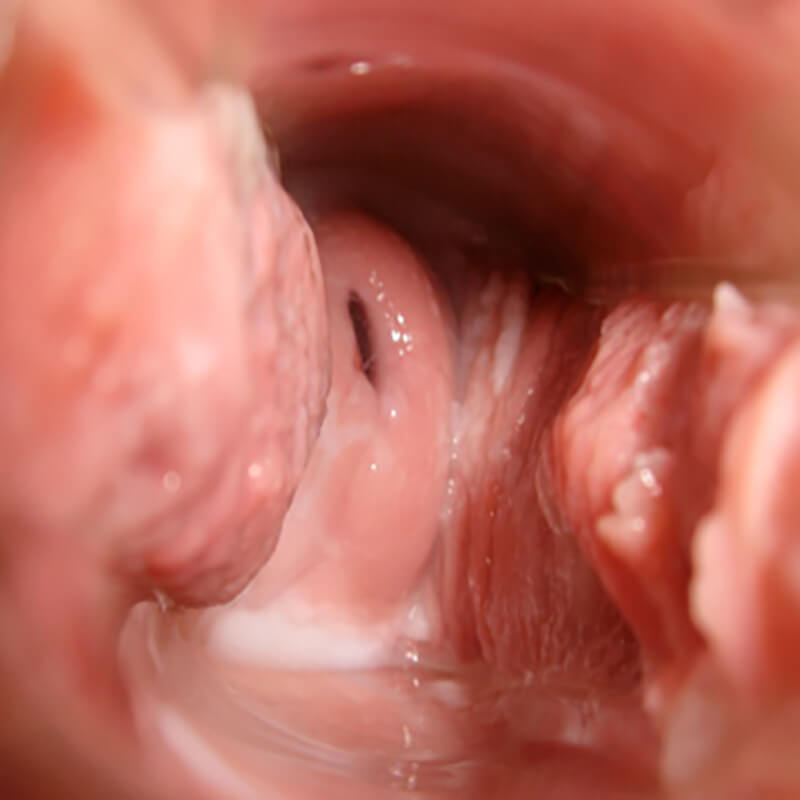How Cervical Mucus (CM) and Position Helps You Get Pregnant [How To Guide]





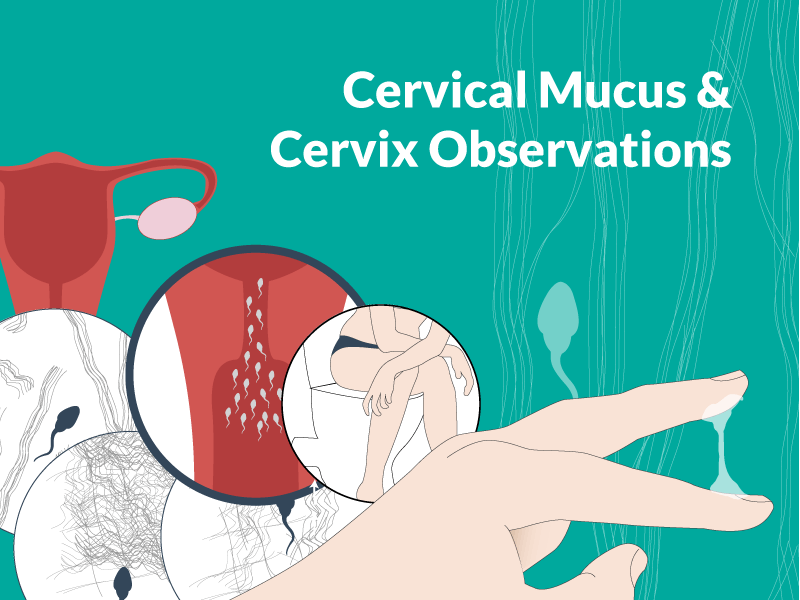 There are a number of things you can do to detect when you're fertile and when you ovulate.
There are a number of things you can do to detect when you're fertile and when you ovulate.
In this article we will be focusing on the natural fertility signs that your cervix and cervical mucus provides each cycle.
It's easy and effective to learn when you're fertile by checking your cervical mucus (also known as cervical fluid) and/or checking your cervix position and texture.
Here's 4 reasons why you need to read this article;
- Having sex on the wrong days essentially means sperm will NOT reach your egg.
- You're going to learn how your cervix controls the transport of sperm and use this knowledge to your advantage.
- Understanding when to have sex based on mucus type can increase your chances of conception from 0% to 30%.
- Step-by-step "how-to" instructions and images will help you quickly learn this.
While some methods of detecting fertility and ovulation rely on apparatus that you are required to buy (such as a basal body temperature thermometer or ovulation prediction kits) cervix and cervical fluid monitoring doesn't require you to purchase anything.
All you need to do is be aware of the natural signs your body provides each cycle.
Hormones that control your menstrual cycle are responsible for the pattern of changes that occur in your cervix and cervical mucus.
Once you know these patterns you can time sexual intercourse in relation to ovulation to increase your chances of getting pregnant sooner. We will be explaining when the best days are, later in this article.
We will also cover ways to increase and thin your cervical mucus, to help sperm reach your egg easier.
What is the cervix?
The cervix is a dynamic part of the female reproductive system which helps facilitate the journey of sperm during ovulation. At other times, the cervix prevents sperm from entering the uterus. It can be described as the gateway to the uterus, acting as both a barrier and transport for sperm, depending on the phase of the cycle.
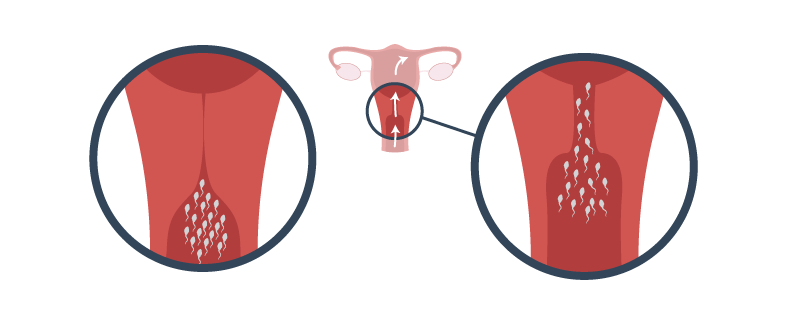
It's a cylinder of muscle tissue about one inch long that connects the top of the vagina to the uterus. The length and texture of the cervix changes during the cycle.
The following image shows the position of the cervix. Note how it connects the vagina to the uterus. The part of the cervix on the vagina side is called the 'ectocervix' and it looks like a small doughnut with a small hole in the center. The opening in the center is called the 'external os'. The canal inside the cervix is called the 'endocervix', the opening at the uterus end is called the 'internal os'.
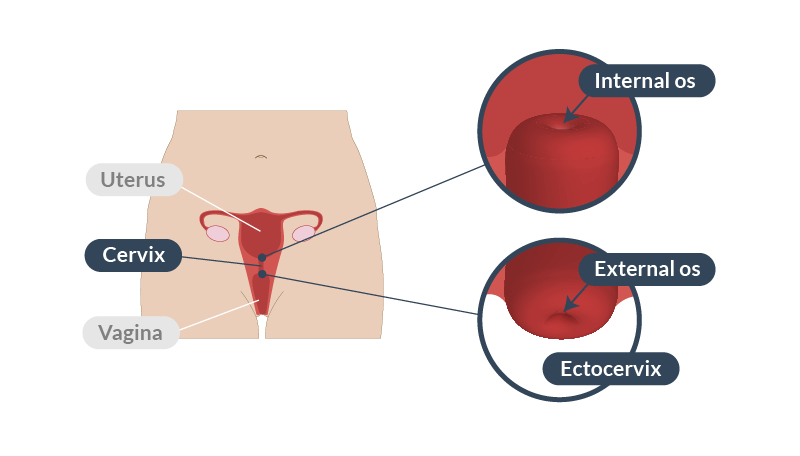
The cervix also has a role during birth, when it dilates up to 10 cm to allow a baby to pass through from the womb.
Cervix changes
Your cervix changes during the fertile phase of your cycle. You can observe the changes by feeling your cervix and we'll show you how to do this step-by-step below.
Below is a typical pattern of cervix changes you can expect to observe.
|
Before Fertile Phase |
Before your fertile phase your cervix will feel hard (like the tip of your nose) and be lower in the vagina, closed and dry (no cervical fluid). |
|
Fertile Phase |
As you enter your fertile window and approach ovulation your cervix will change. It will feel softer (like your lips), higher, open and wet (due to the presence of cervical fluid). This is known as "SHOW" (soft, high, open, wet) - your most fertile state. |
|
After Fertile Phase |
After ovulation, the cervix reverts back to its infertile position. |
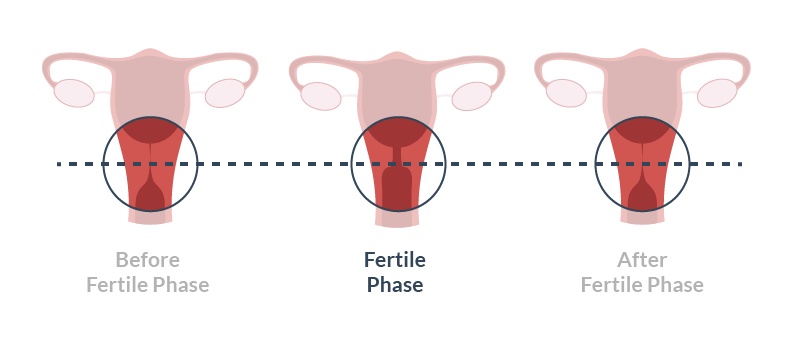
Note: Cervix changes occur slowly as ovulation approaches, but revert quickly after ovulation.
Real cervix images
Below are 33 real cervix images, an excellent way for you to visualize an entire cycle of cervix changes so you know what to feel and look for when monitoring. If you wish to view these, please tap on Expand Real Cervix Images.Cervix Day 1
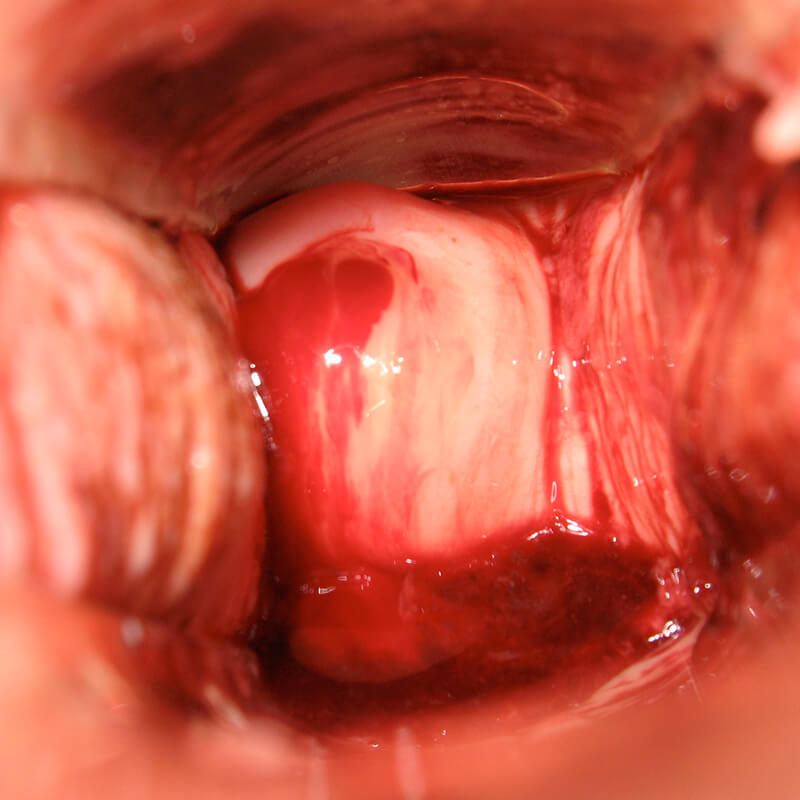
Blood - Red, clotty and heavy flow.
Cervix Day 2
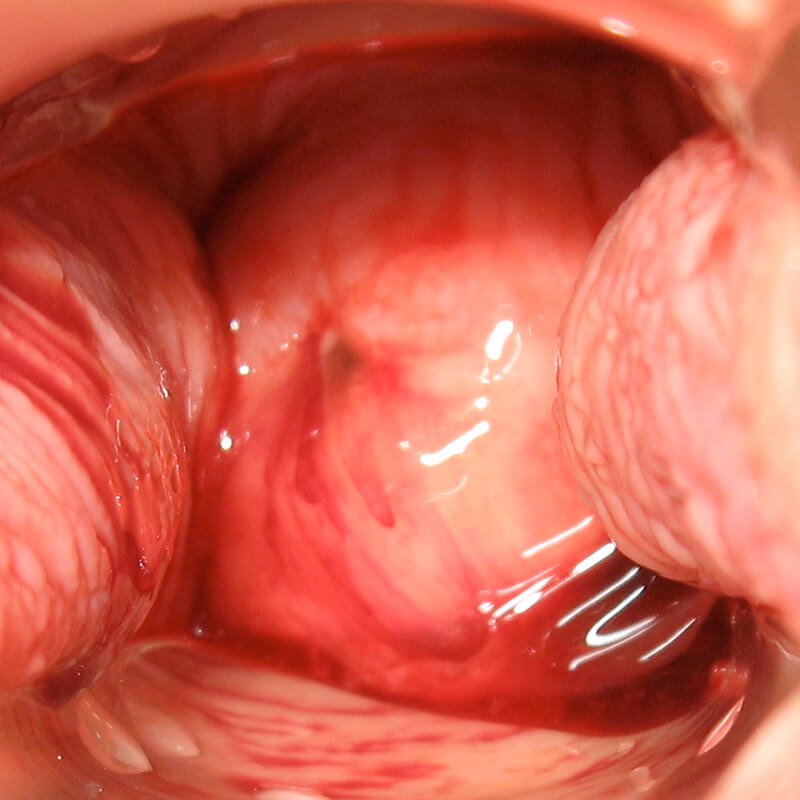
Blood - Dark red, medium/light flow.
Cervix Day 3
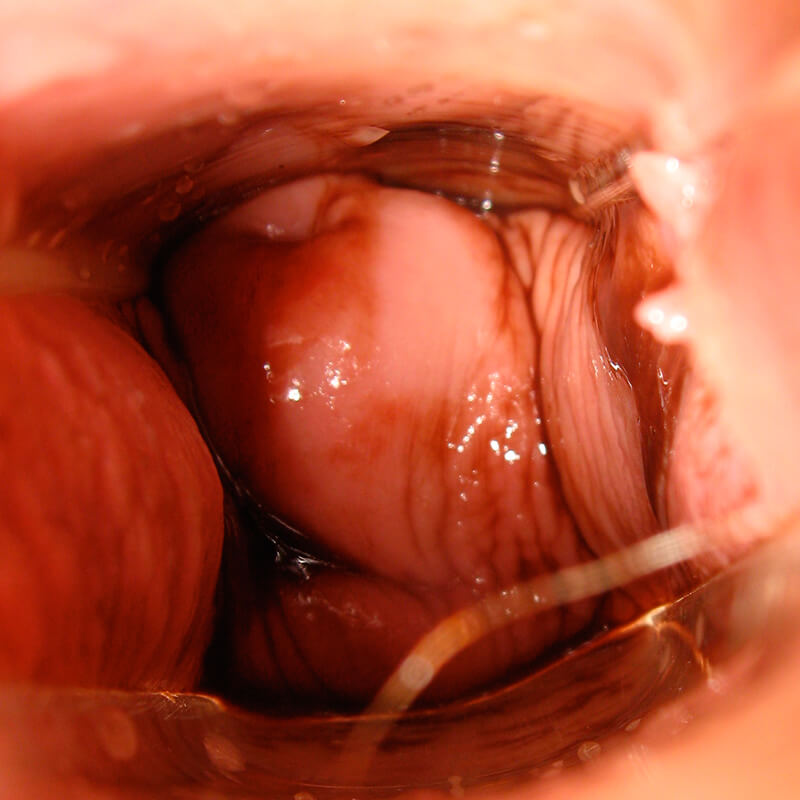
Blood - Brown and watery dark red, low flow.
Cervix Day 4
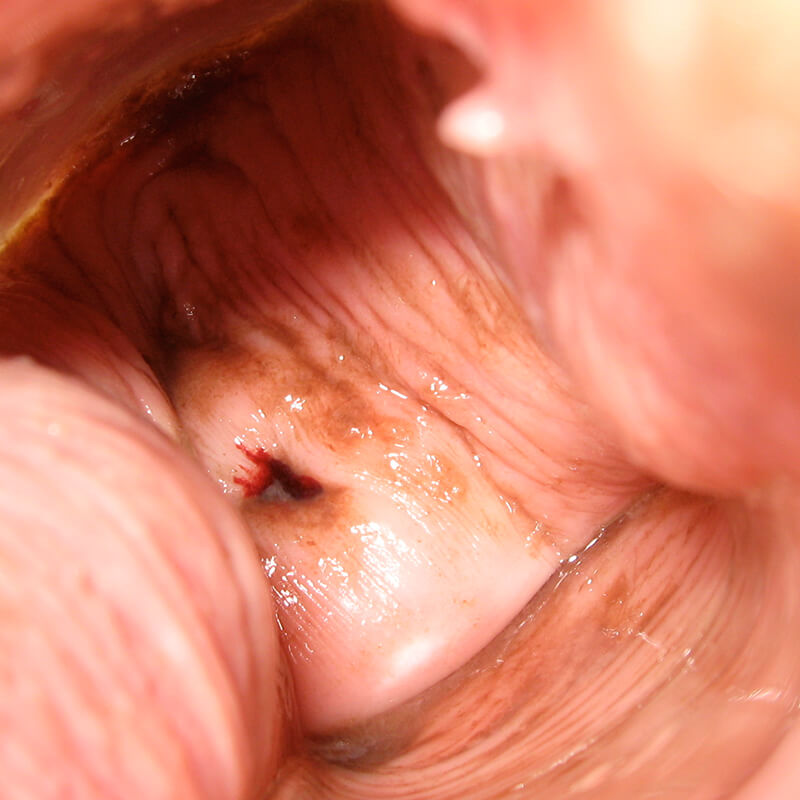
Brown spotting with some dark red flecks (note fresh blood at external os).
Cervix Day 5
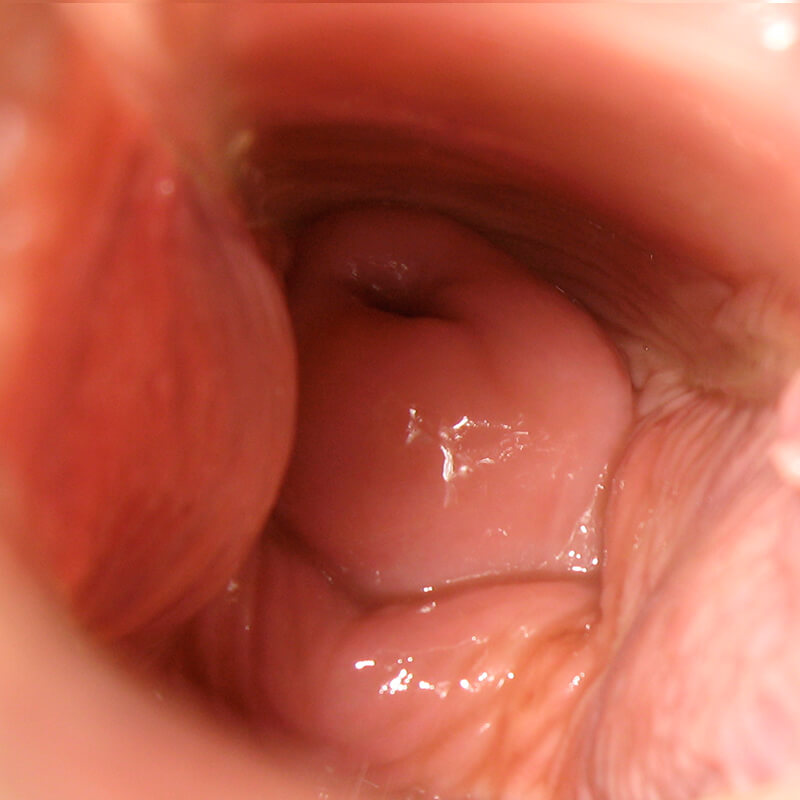
Light brown discharge, very low flow.
Cervix Day 6
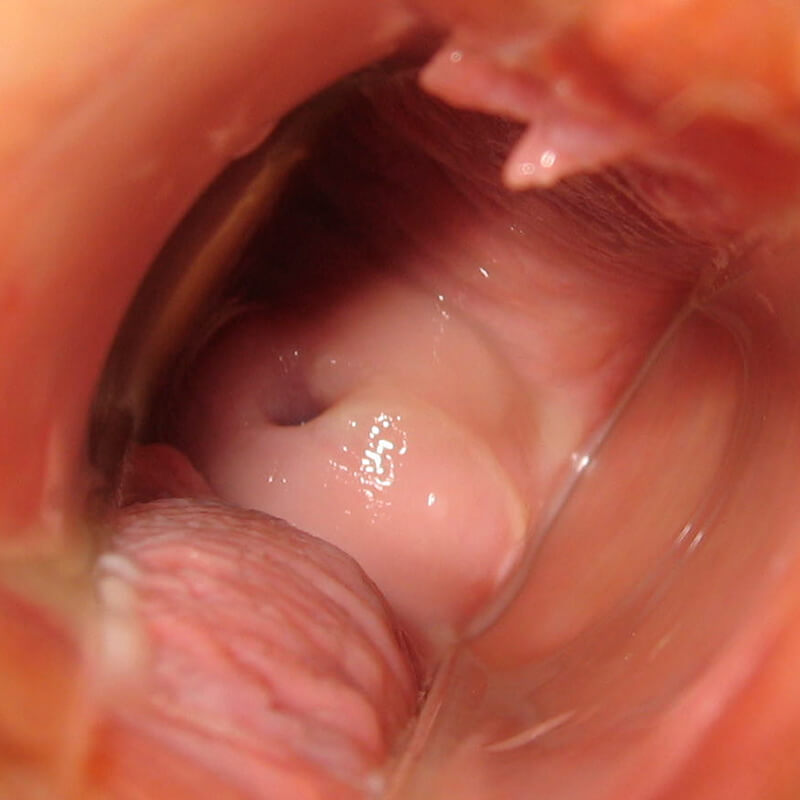
Very light brown discharge. Sticky cervical mucus.
Cervix Day 7
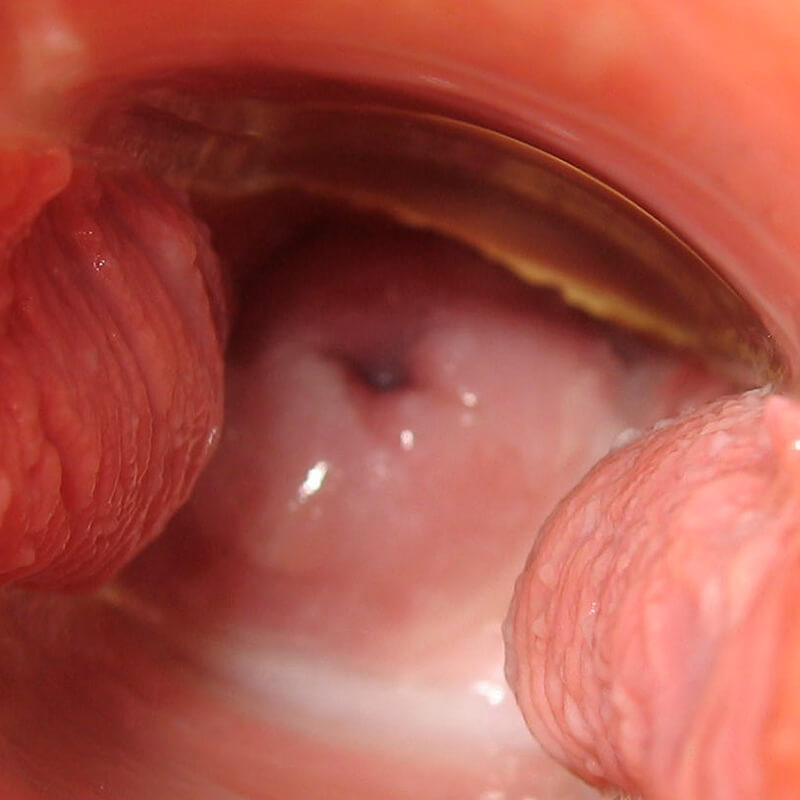
Cervix in low and closed position. Cervical mucus sticky.
Cervix Day 8
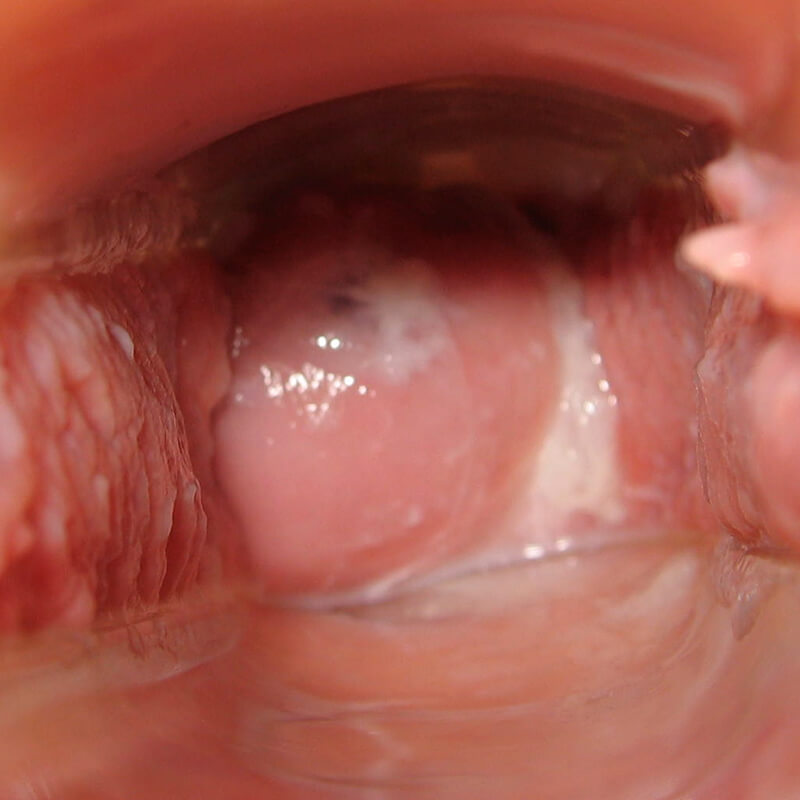
Cervix firm, low and closed.
Cervix Day 9
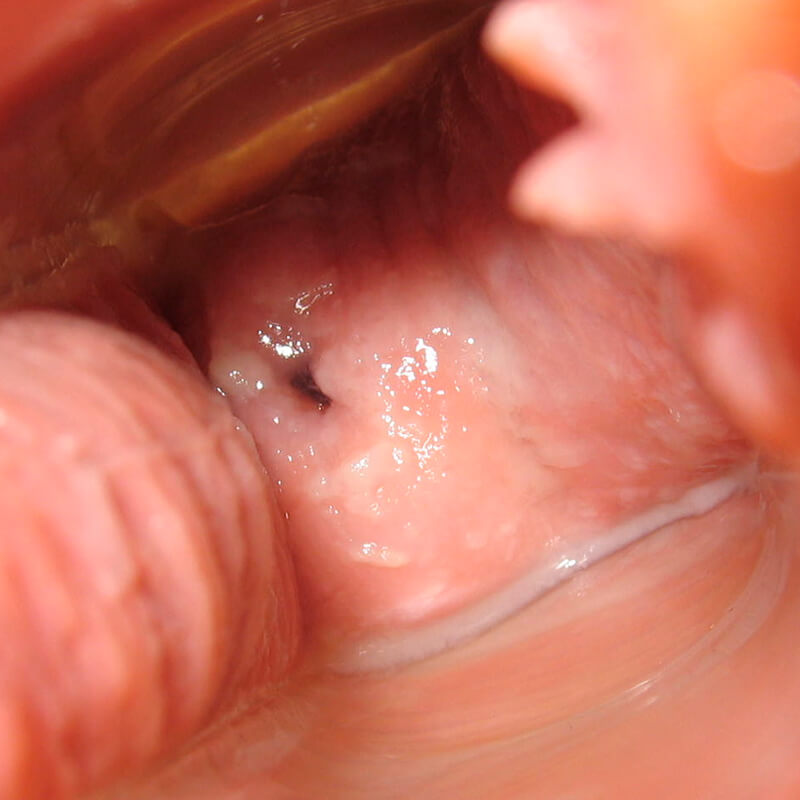
Cervix low and closed. Dry sensation.
Cervix Day 10
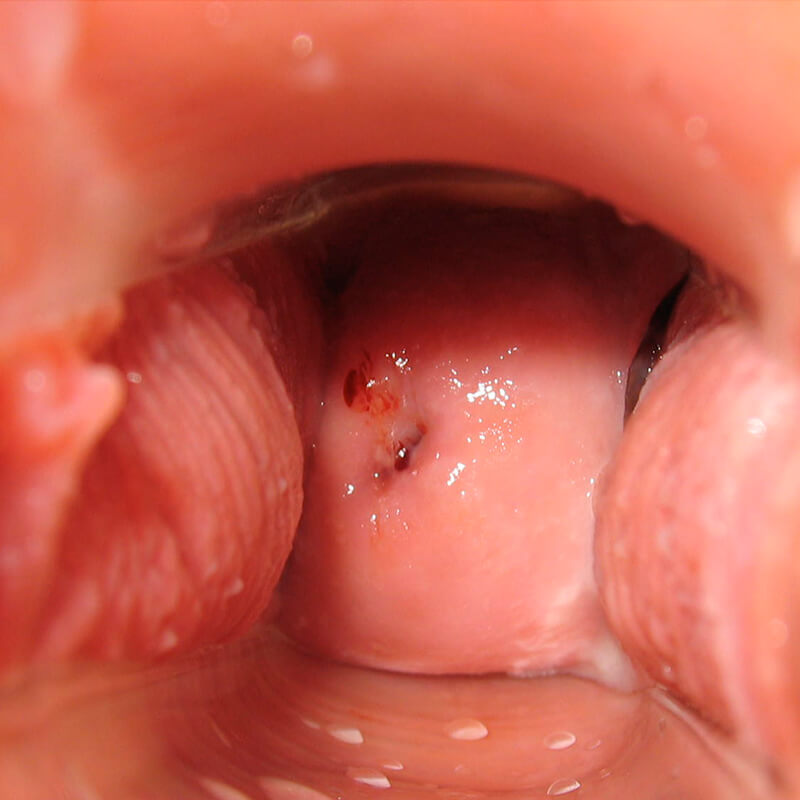
Cervix low and closed.
Cervix Day 11
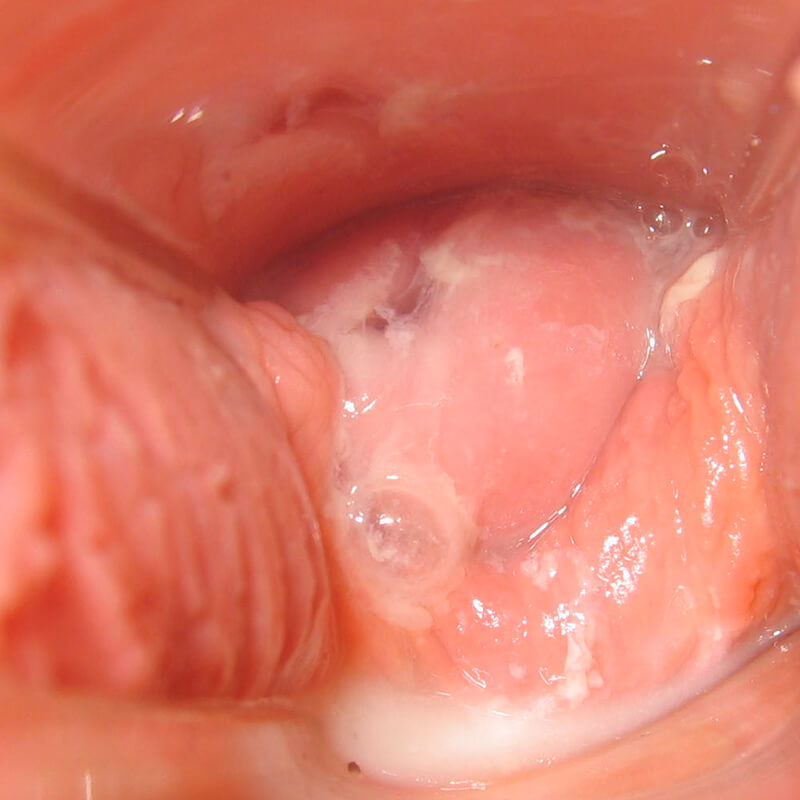
Creamy cervical mucus.
Cervix Day 12
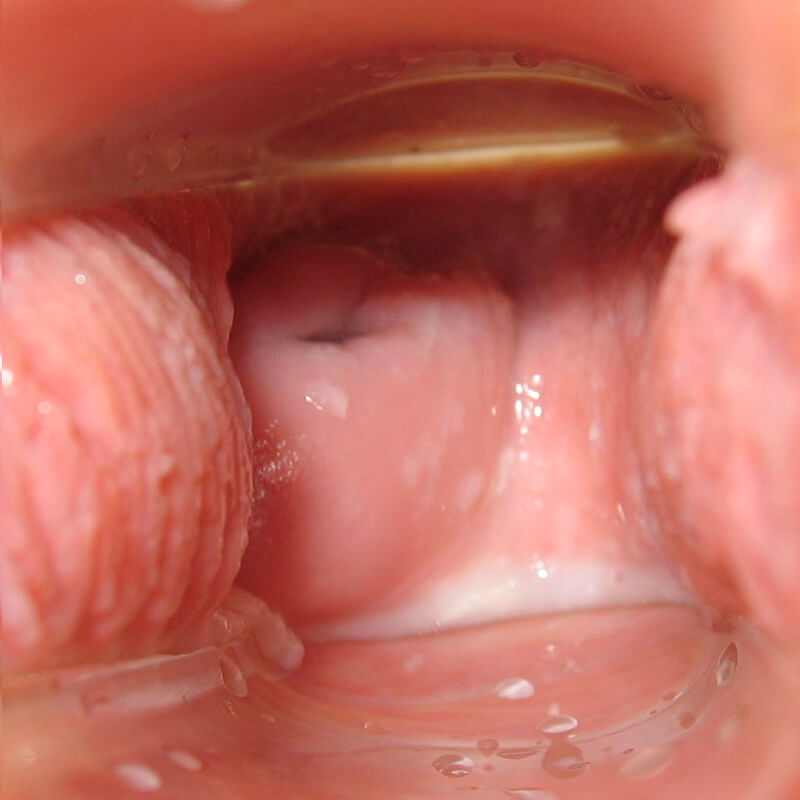
Cervical mucus white and wet, milky
Cervix Day 13
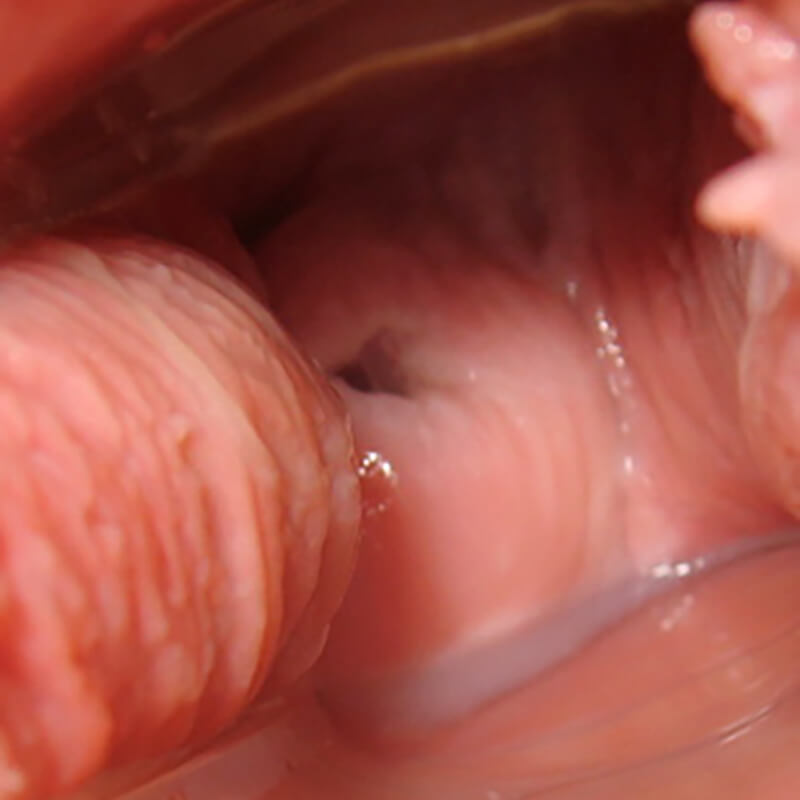
Cervix softening and moving upwards. Lots of watery cervical fluid
Cervix Day 14
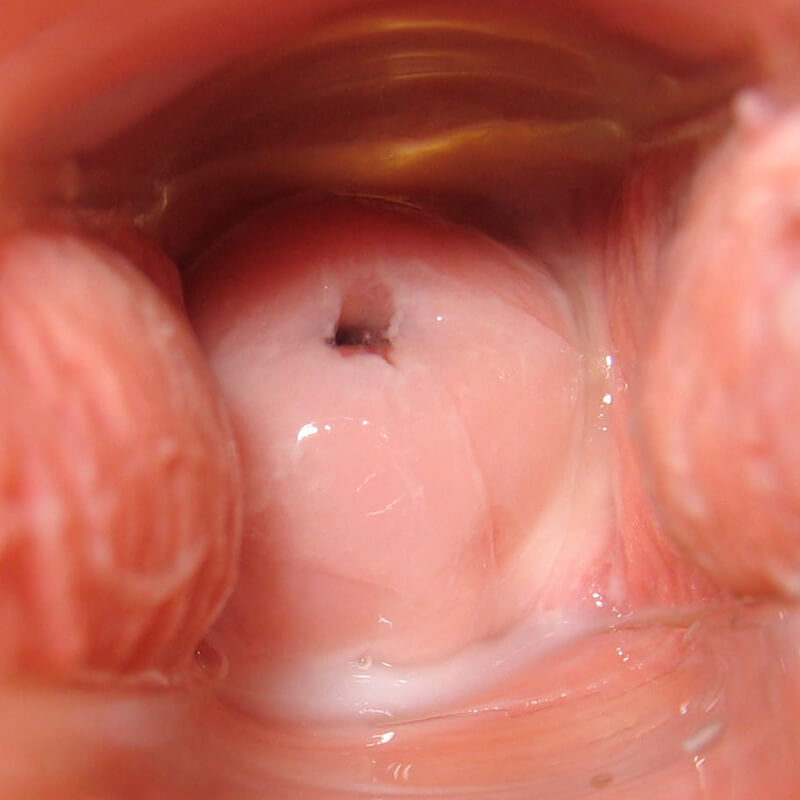
White/clear watery cervical fluid, dripping.
Cervix Day 15
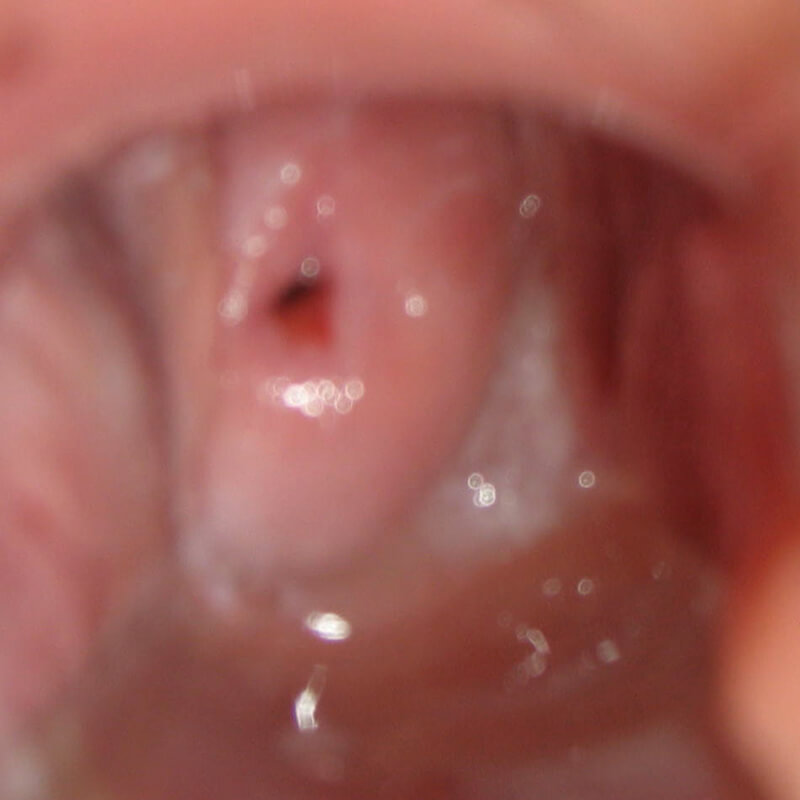
Cervix is soft, high and open. Cervical mucus changed to more raw egg white texture.
Cervix Day 16
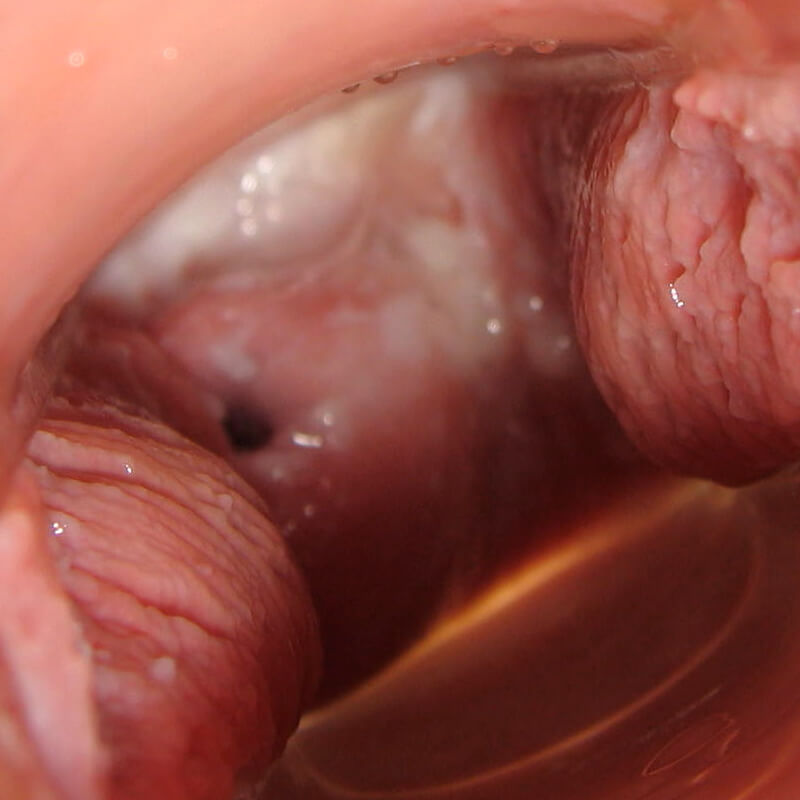
Cervix soft and high. Cervical mucus alternately wet and like raw egg white consistency.
Cervix Day 17
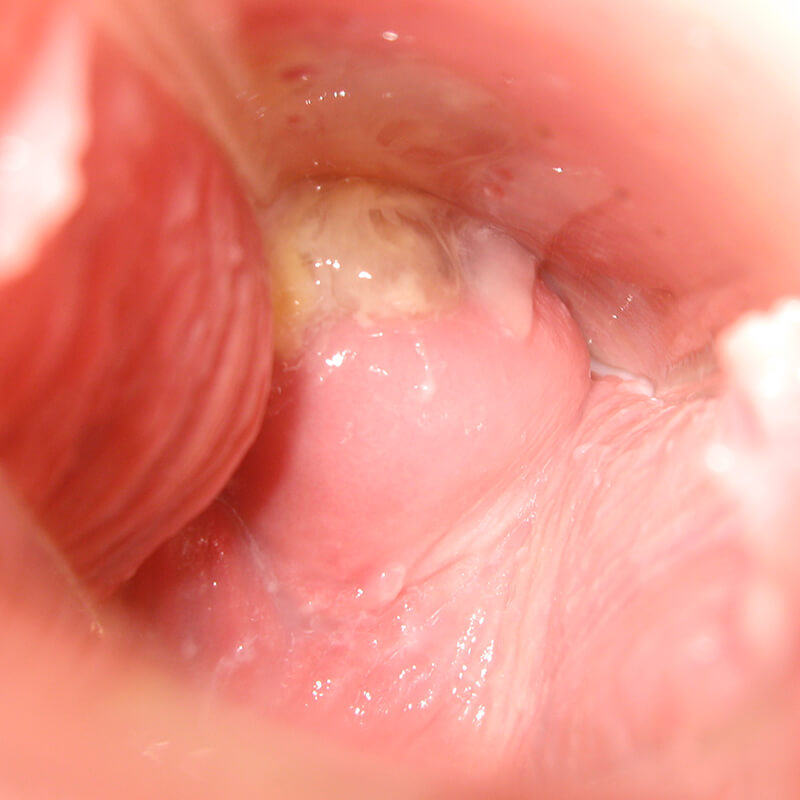
Stringy cervical mucus when stretched between fingers.
Cervix Day 18
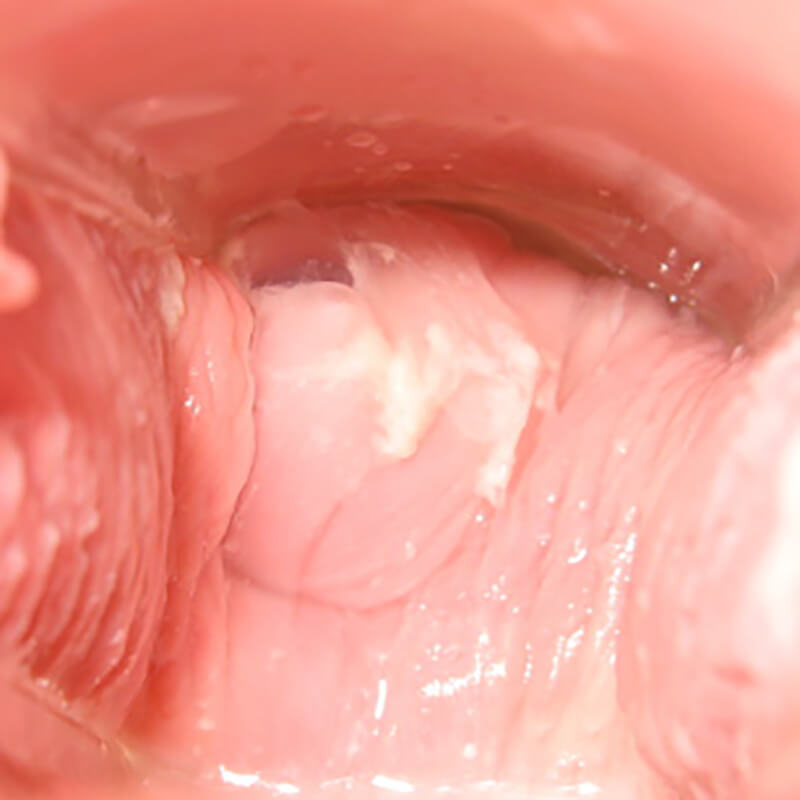
Egg white like mucus.
Cervix Day 19
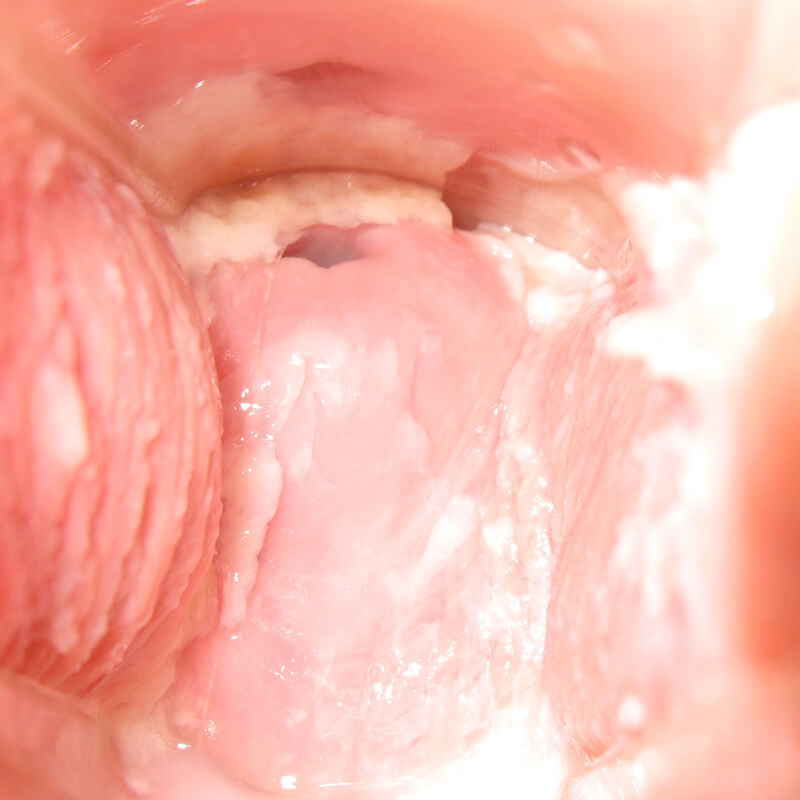
More white-tinged egg white type mucus.
Cervix Day 20
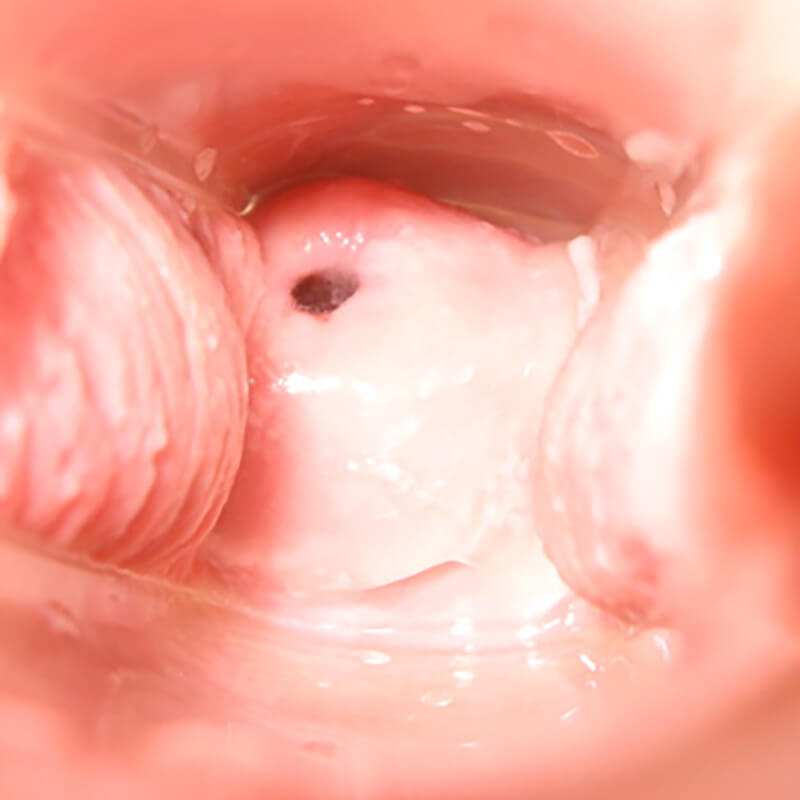
Suspected ovulation day (mittelschmerz experienced). Cervical mucus gelatinous and egg white. Internal os very open.
Cervix Day 22
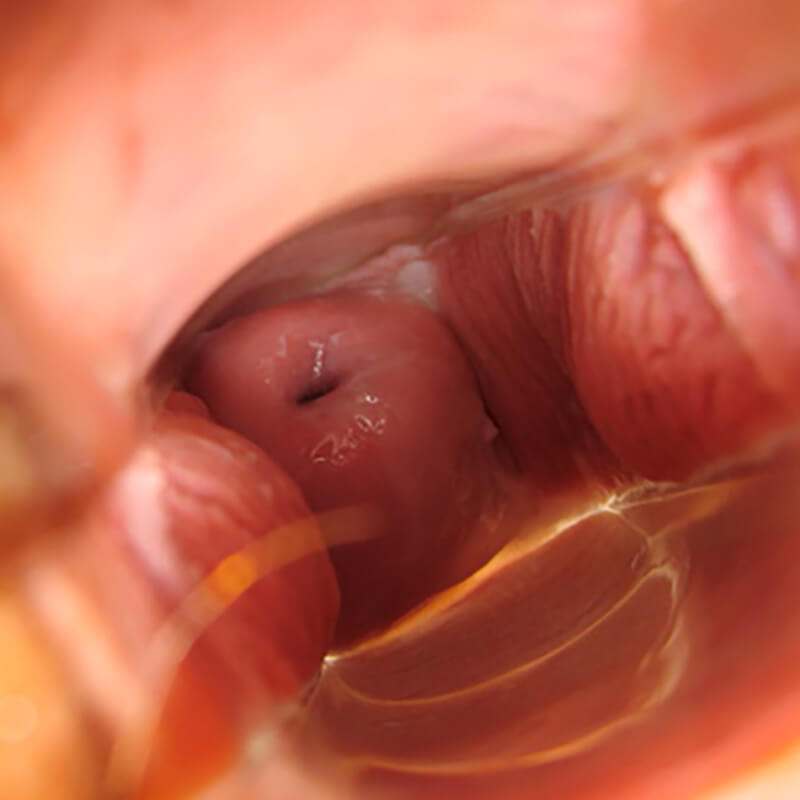
Cervix in middle position.
Cervix Day 23
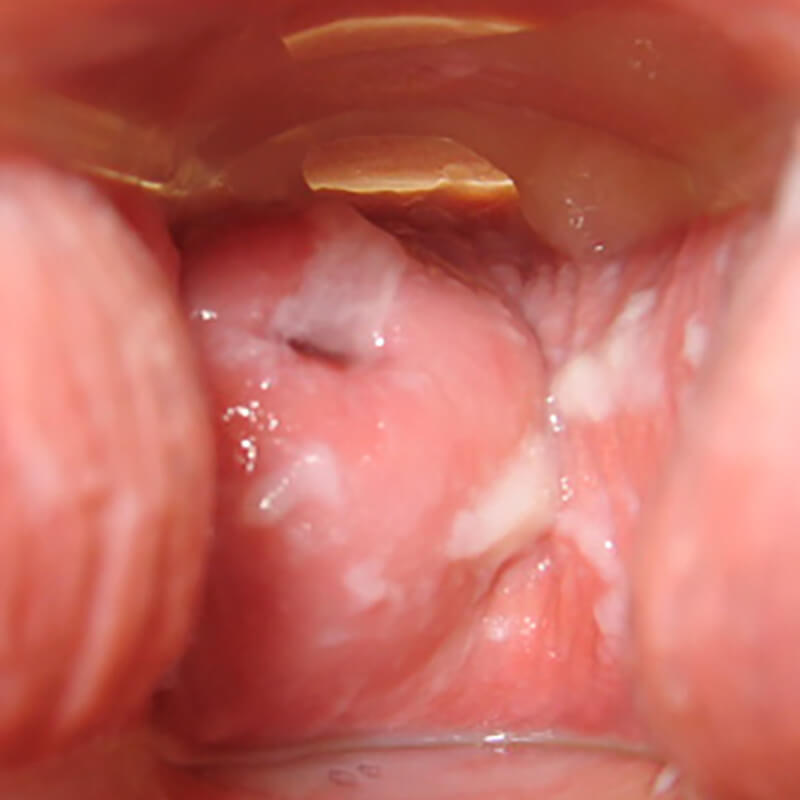
Dry feeling.
Cervix Day 24
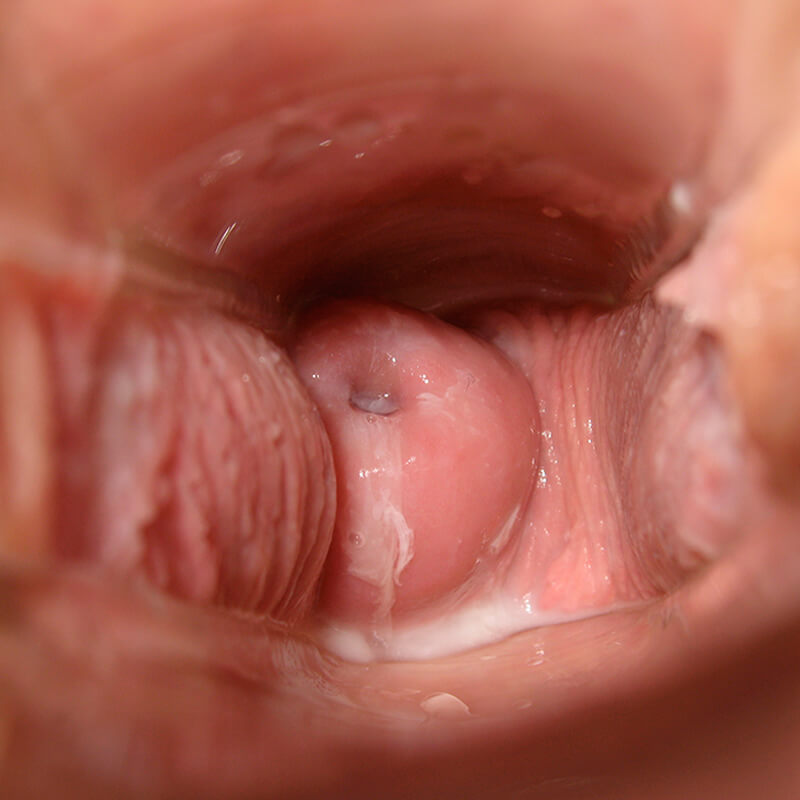
Cervix feels hard and high again. Dry feeling.
Cervix Day 25
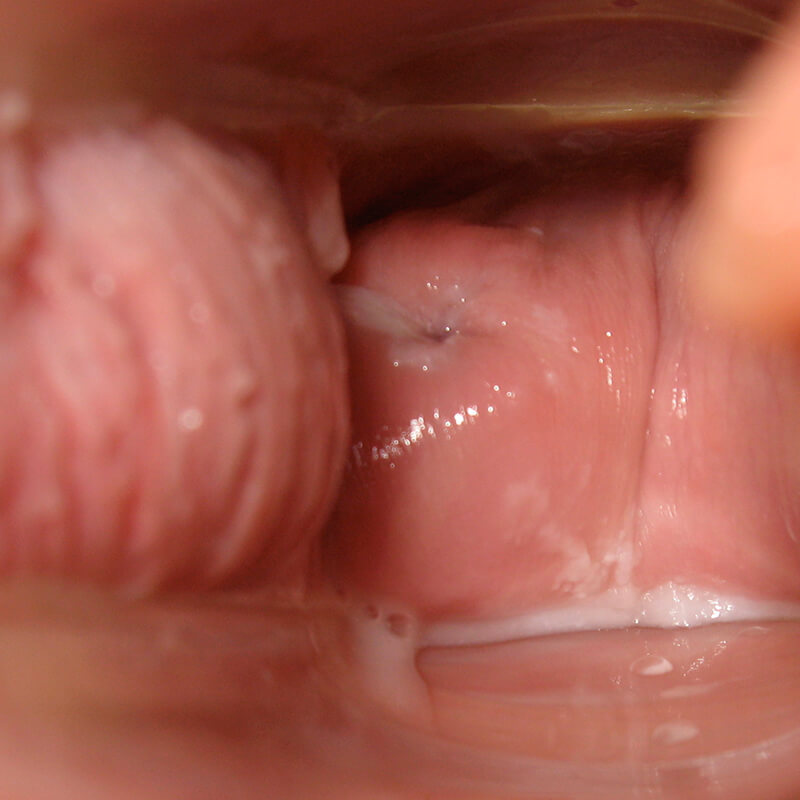
Dry/tacky feeling.
Cervix Day 26
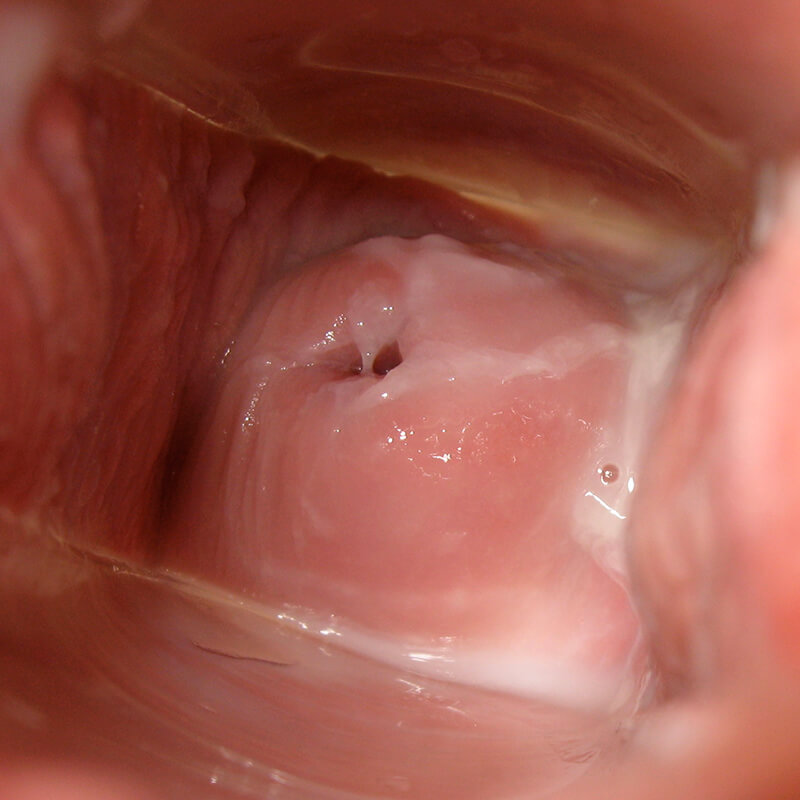
Tacky cervical mucus.
Cervix Day 27
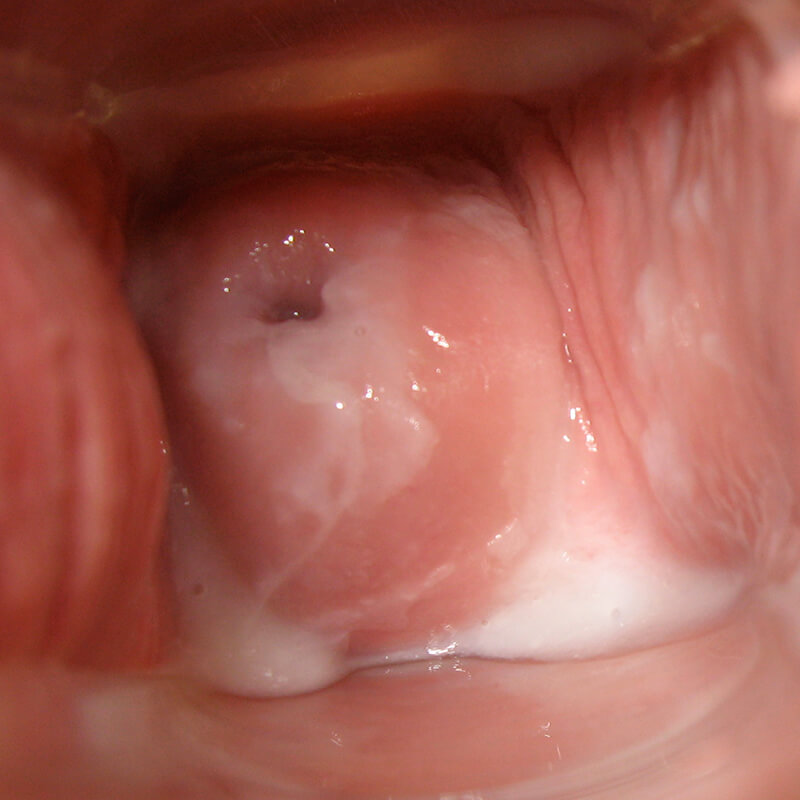
Tacky cervical mucus.
Cervix Day 28
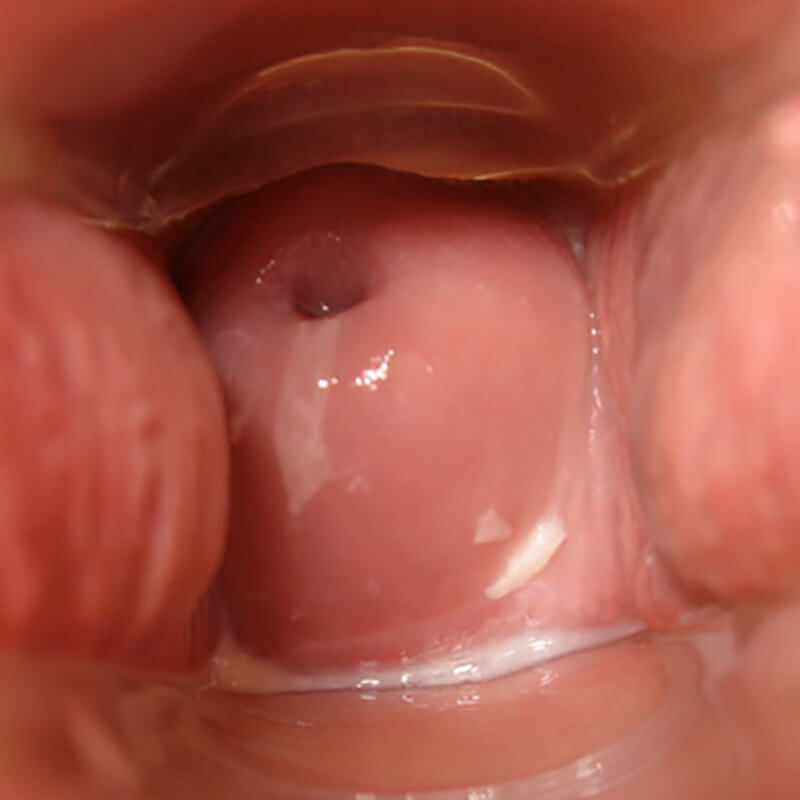
Dry feeling.
Cervix Day 29
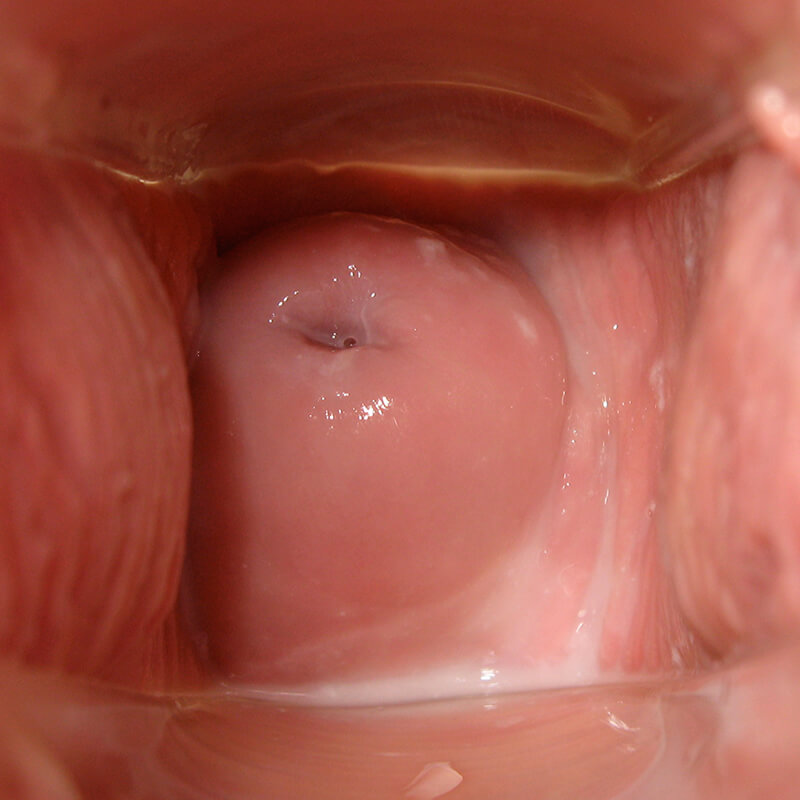
Dry feeling.
Cervix Day 30
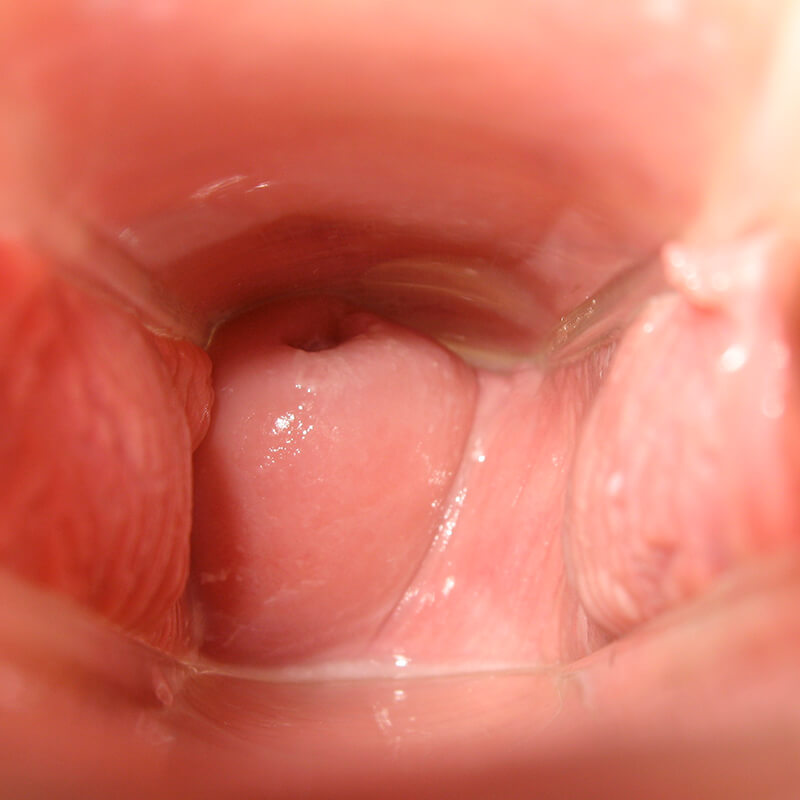
Dry feeling.
Cervix Day 31
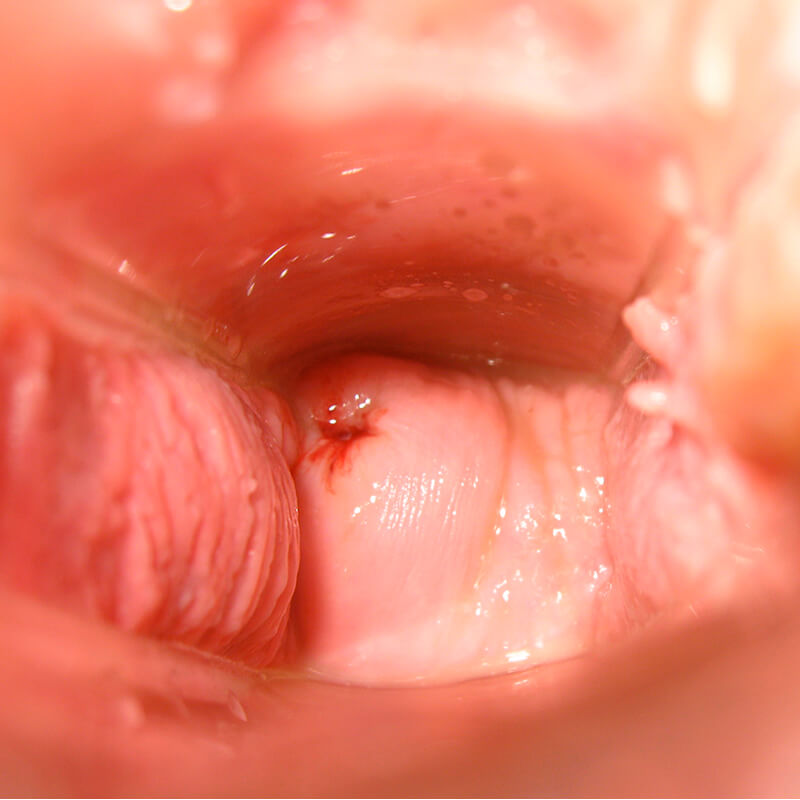
Dry. Note fresh blood at internal os, sign of period about to start.
Cervix Day 32
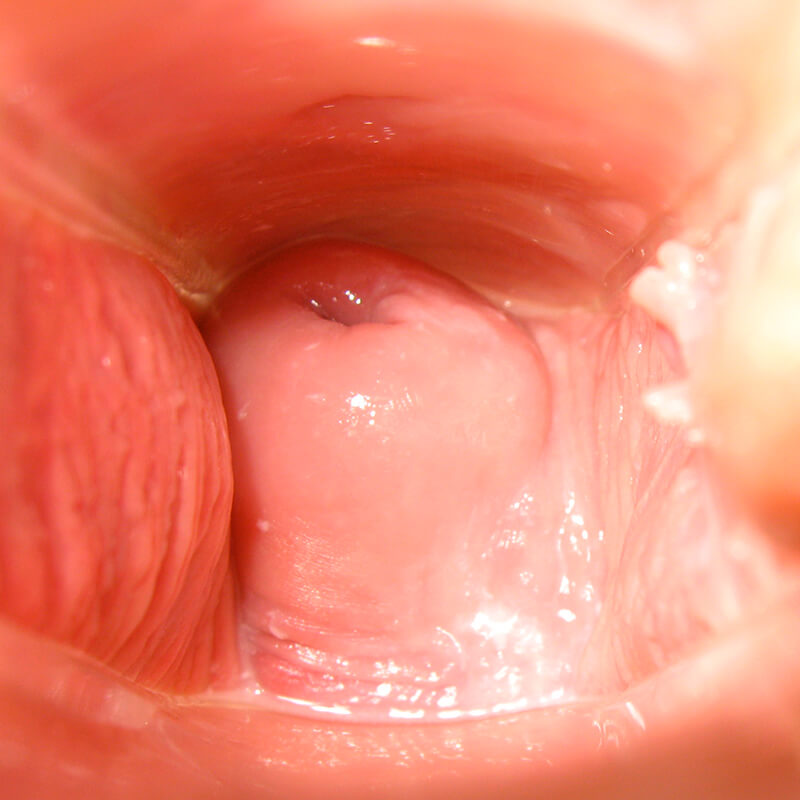
Cervix low and open.
Cervix Day 33
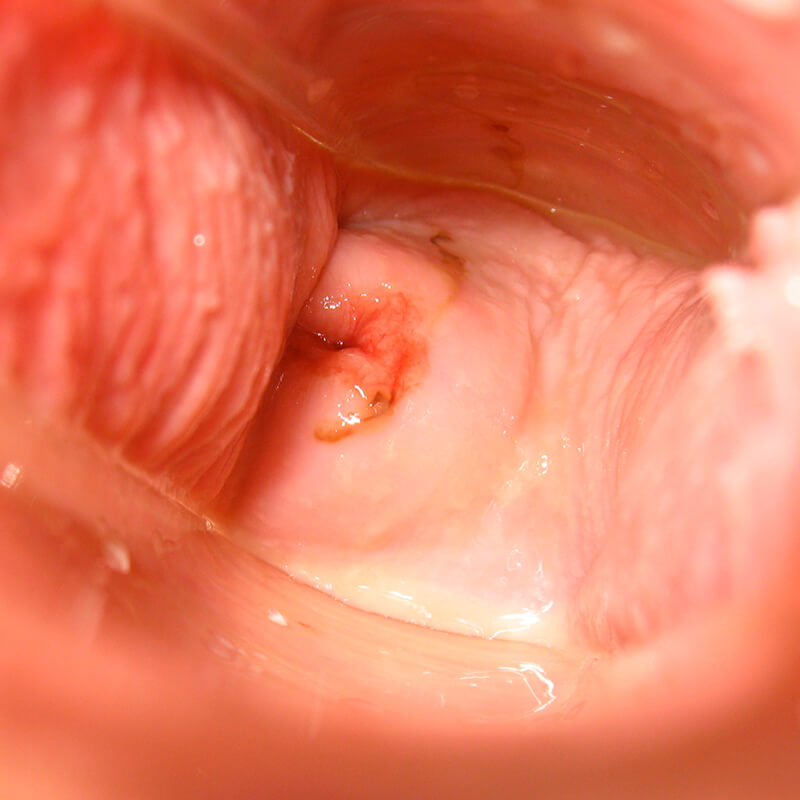
Pink spotting. Period begins the following day (13 days after ovulation).
What is cervical mucus?
In response to hormones that control the menstrual cycle, glands in the cervix produce a substance known as cervical mucus, also known as 'CM', cervical fluid (CF), vaginal discharge, vaginal secretions or cervical secretions.
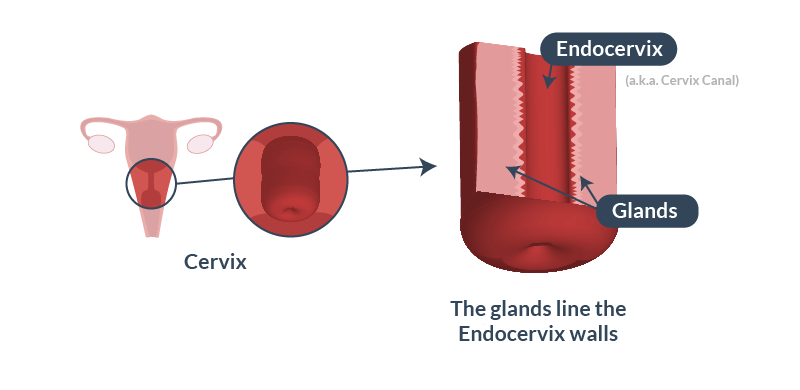
A good way to understand cervical mucus is to compare it to the mucus that comes out of your nose. If you blow your nose when you don't have a cold, you may not notice any mucus, or you may notice a hard sticky mucus. If you touch it, it feels tacky. When you have cold or allergy the mucus contains higher levels of water and becomes runny and feels slippery.
Your cervical fluid also goes through several changes in appearance and texture, changing from sticky/tacky to slippery, also due to rising levels of water content.
It changes for a reason, to allow sperm or prevent sperm and bacteria from entering your uterus. You'll learn more about these physical changes of the cervix in the next section.
When the hormone estrogen is high (during the days leading up to ovulation) the structure of cervical mucus allows sperm to swim through it.
At other times during the menstrual cycle, the structure of cervical mucus presents a barrier to sperm and plugs the cervical canal to prevent any bacteria entering the uterus. See the images below.

The daily production of cervical mucus comes from cells that line several hundred glands in the cervix. Depending on the phase of the cycle, production can vary from 600 mg before ovulation to 20-60 mg at other times.1
Cervical mucus is a natural and healthy substance that provides sperm with an optimal environment to survive and swim. It's similar to semen in the way that both help sperm survive.
It's mostly made up of water (about 93%, increasing to 98% before ovulation). It also contains electrolytes, glucose and proteins.2
Note: Cervical fluid is not to be confused with vaginal fluid, the latter of which is a lubricative fluid that can be produced during sexual arousal anytime during the menstrual cycle.
Cervical mucus changes
When trying to get pregnant, it makes sense to regularly check your cervical fluid/mucus. The advantage of checking and learning your pattern of changes is a better understanding of your body and when you're most fertile.
You can observe changes in cervical mucus from the vulva (the external genitals including the labia and vagina opening) or internally, we show you how to do both step-by-step below.
You can examine the toilet tissue after using the bathroom, but it can be beneficial to carry out both external and internal observations.
Some women find it hard to interpret their fertility by external mucus observations alone. Internal observation helps by obtaining mucus directly from the cervix opening. You're also more likely to notice mucus earlier than you would see it at the vulva.
We asked 29,523 women who are trying to get pregnant how they were checking their cervical fluid. Only 13% said they were using their fingers. Here are the full results.
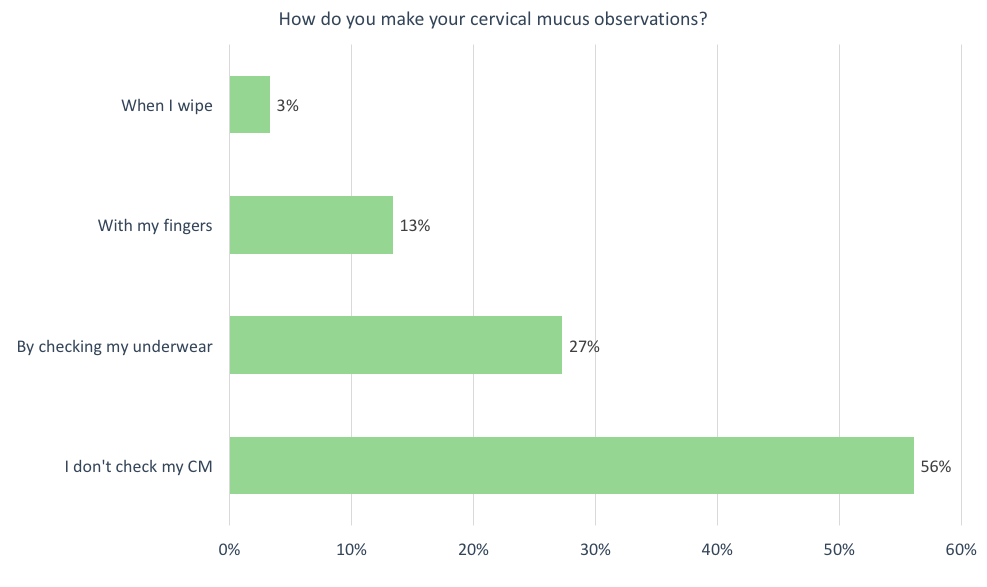
The pattern of changes in cervical mucus
Take a look at the pattern of changes you can expect to see during a typical cycle.
|
Beginning of cycle |
The menstrual cycle begins on the first day of your period. During period days blood is passing through the cervix. |
|
After your period |
After your period, you may not notice any cervical mucus (dry days). After the dry days your cervix discharge will start. Rising hormone levels cause your cervix to produce mucus that is often described as sticky, tacky or pasty. |
|
Approaching ovulation |
As you approach ovulation and enter your fertile window, increasing levels of the hormone estrogen cause your cervix to produce a mucus with higher water content, making it become creamy. |
|
Just before ovulation |
At peak fertility, your cervical mucus looks and feels like raw egg white (clear, slippery and stretchy), often referred to as EWCM (egg white cervical mucus). Using a finger and thumb you should be able to stretch it more than an inch without it breaking. This is really fertile cervical mucus and it provides the best environment for sperm. |
|
At the time of ovulation |
Your cervical mucus may become more watery and reach its maximum in quantity after peak fertility, but it's not as fertile as the raw egg type. |
|
After ovulation |
After ovulation cervical mucus starts to become sticky again and then dry up until your next period (about 10 to 14 days later). |
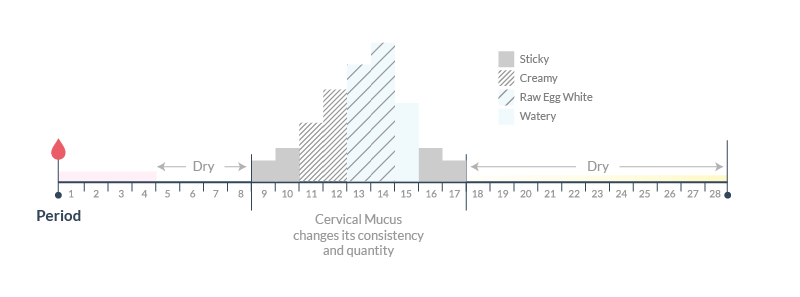
Note: It's possible to see two or more waves of fertile cervical mucus. This can happen when your body prepares to ovulate but ovulation doesn't occur. Your cervical mucus dries up. Then your body prepares to ovulate again and so the cervical mucus shows again. This is known as the "double peak pattern" and is explained in more detail later.
Step-by-step "how-to" instructions to check your cervix and cervical mucus (CM)
The following steps will show you how to check your cervix and cervical fluid/mucus. You may choose to do both of these observations at the same time (internal observations) or only the external observations of cervical mucus/fluid.
In order to avoid repetition, the "How To" steps include instructions for both:
We believe this is a better way to teach you how to carry out the observations. For this reason, some of the steps will be split into two sections, one for the internal observations and one for external observations.
It's a good idea to observe your cervix and cervical mucus pattern over a few cycles to ensure you are confident in identifying the changes.
Step 1 - When to check
Begin checking after your period ends. Check one to two times a day, but not straight after sleeping or after a bowel movement (you may get inaccurate cervix results due to relaxed muscles).
Start checking after your period ends. You can check each time you go to the toilet, before and after urination.
Step 2 - Hygiene and safety
Always clean your hands with soap and water before checking. Don't do internal observations with long or sharp fingernails.
Step 3 - Locating your cervix
This step only applies for Internal Cervix and CM Observations, if you are only performing External CM Observations, please go to step 4.
Your cervix is the part of the uterus that opens into the vagina. It's at the top of your vagina; about 3 to 6 inches inside.

You can locate your cervix by sitting on an open toilet and inserting your index and middle fingers into your vagina to touch your cervix. You can also sit on the edge of your bed or even stand up and raise one foot onto your bed. If you're doing internal cervical mucus observations at the same time (covered below), you can use two fingers.
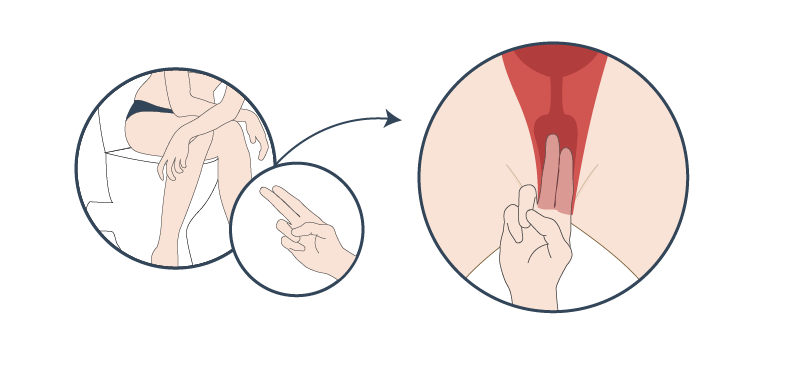
Depending on the phase of your cycle, your cervix may be higher or lower in the vagina. If you cannot reach it, try pushing your abdomen in and down with your other hand. If you still cannot reach it, it's a good sign that your cervix is high, indicating you're in your fertile phase.
Step 4 - How to check
Your cervix is shaped like a small doughnut with a small hole in the center. Some people describe it like the small end of a pear with the stem removed.

Reach as far as you can into your vagina and feel your cervix with the tips of your fingers.
Note: It's not uncommon to find that that your cervix is tilted to one side, so feel around.
You should be able to feel a small indentation where the cervix opening is.
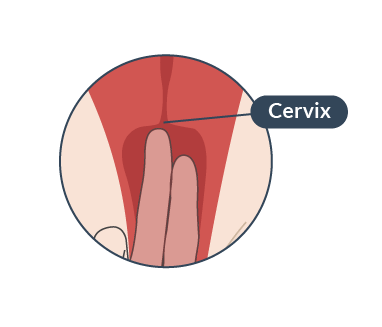
Cervix - As described above, your cervix will change from an infertile state to a fertile state before ovulation, and then revert back to its infertile state after ovulation. Check the firmness, does it feel soft like your lips, or firm like your nose. Check the position, is it high or low in the vagina. Check the opening, does it feel open or closed? Check the moistness, does it feel wet or dry.
CM - To collect CM for observation, open your fingers and place your fingertips either side of your cervix and slowly move your fingers from the sides of the cervix to the top, until your fingers are together again.
Withdraw your fingers and look at your fingertips for signs of mucus by slowly separating your fingertips.
You can check with toilet tissue or by feeling your vulva and its sensations.
Toilet tissue - Using white toilet tissue, fold it and wipe yourself from front to back observe the feeling, does it feel dry, slippery, wet? Look at the toilet tissue, do you see anything? Lift the mucus off the tissue and observe it between your finger and thumb.
Vulva observations - Pay attention to sensations at the vulva, does it feel dry, tacky, moist, slippery, wet? Gently feel your vulva areas and pay attention to how it feels.
Step 5 - Identifying and recording the changes
Cervix - How did it feel - was it soft or firm, lower or higher, open or closed, wet or dry? Or somewhere in between? Take a note of what your felt.
- SHOW (soft, high, open, wet)
- Medium (in between)
- FLCD (firm, low, closed, dry)
CM - Cervical mucus tends to start out as thick or tacky, then as it gets more fluidly it becomes creamy, then stretchy (raw egg white), then more fluidly (watery) before drying up.
Separate your fingers to see how far it stretches. Dry / tacky mucus won't stretch at all, stretchy mucus will typically cling to your fingers and can stretch from anywhere between an inch to about 4 inches. You are less fertile when you have sticky / tacky mucus and more fertile when you can stretch your mucus over an inch.
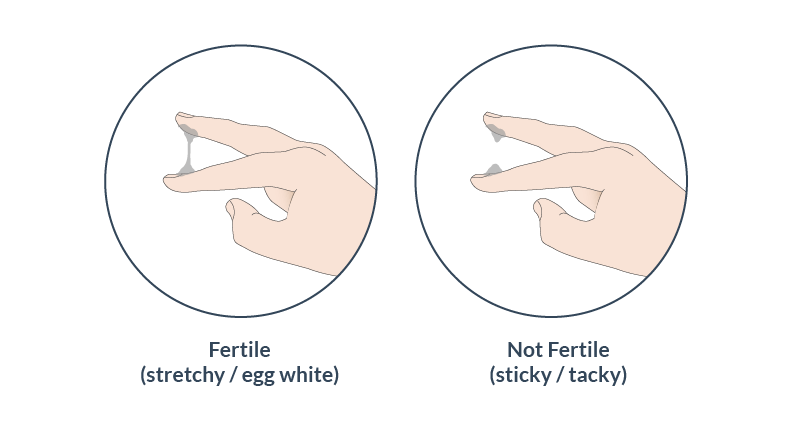
Take a note of the presence and mucus type observed (none/dry, sticky/tacky, thick/creamy, raw egg white, watery).
Record the presence and type of mucus you observed from the external observation (none/dry, sticky/tacky, thick/creamy, raw egg white, watery).
Both external & internal - If you are using Ovulation Calculator to help you get pregnant, log the result in your daily log at the end of the day. In the case of multiple types of mucus throughout the day, record the most-fertile type.
Quick reference of cervix and mucus changes
|
Time in cycle |
Cervix feeling |
Mucus appearance, texture |
Sensation |
Fertility rating |
|
After period |
Firm, Low, Closed, Dry |
None/Dry |
Dry |
Not fertile |
|
After dry days |
Firm, Low, Opening, Dry |
Sticky/Tacky |
Sticky |
Not fertile |
|
Approaching ovulation |
Soft, Higher, Opening, Wet |
Creamy, cloudy, whitish, yellowish. Thick and does not stretch. |
Moist |
Fertile |
|
Just before ovulation |
Soft, Highest, Open, Wet |
Slippery, looks and feels like raw egg white |
Slippery |
Most-fertile |
|
Ovulation |
Soft, Higher, Open, Wet |
Watery |
Liquid |
Fertile |
|
After ovulation |
Hard, Lower, Closing, Dry |
Sticky, then dries up until next cycle |
Sticky or dry |
Not fertile |
Best days to try and conceive
Conception is unlikely to occur if you don't have sex during your fertile window. Your fertile window is a 6-day interval ending on the day of ovulation. The start of this window normally corresponds to a rise in hormones which results in the cervix producing cervical mucus.
A study in Italy found that the probability of conception is essentially zero on days with no cervical mucus. This increased dramatically to 30% on days with the most fertile-type cervical mucus.
If you're trying to get pregnant the best days to have sex are usually the two days before you ovulate. This is normally when your cervix is in its fertile state (SHOW) and your cervical fluid resembles raw egg white and can be stretched more than an inch.
Increase your chances by having sex on the two best days each cycle, get started.
Causes of low cervical mucus
Some women only have a small amount of mucus and for a small proportion of women they may not notice mucus at all. In some circumstances the lack of mucus is due to inadequate estrogen levels, but in others it may be due to lifestyle factors that may just need a little adjusting.
Here are some causes of a lack of cervical mucus;
- Hormonal imbalance
- Nutrition deficiency
- Medications
- Infections
- Douching (vaginal washing)
- Weight (being under/over weight)
10 Tips to improve cervical mucus
Here are some of the things you can do to increase the quantity and quality of your mucus naturally:
- Stop smoking - Smoking alters how the hormone estrogen is metabolised by the body.
- Avoid toxins - Soap or body wash interferes with the delicate pH balance of the vagina and mucus. Cut out these chemicals to improve cervical mucus.
- Maintain a healthy weight - If you are overweight or underweight it is very likely that your delicate hormone balance is disrupted. Good estrogen levels are needed to make quality cervical mucus.
- Avoid lubrication - This may interfere with your observations but also restricts the movement of sperm. If you do need to use lubrication during sex, use only lubrication that is "sperm friendly".
- Avoid some medications - such as antihistamines, which can decrease the amount of mucus. However, do not cease any prescribed medication until you have discussed this with your doctor.
- Stay hydrated - Drink plenty of water, at least 2 litres a day.
- Avoid high doses of Vitamin C supplements - These may have the effect of drying mucus so make sure you are taking no more than the recommended dose or better still, rather than taking supplements ensure that Vitamin C is present in your daily diet.
- Eat foods with high alkaline properties - Although there is no conclusive evidence, it is believed that eating such foods may improve mucus. Enjoy foods like celery, cabbage, kale, pumpkins, watercress and almonds and avoid highly acidic foods like beef, pork, bacon, wheat, corn and some dairy such as cheese and cow"s milk.
- Take Evening Primrose Oil - Taking this in the first half of your cycle (up until predicted ovulation) may help to improve cervical mucus.
- Take L-Arginine - This is an essential amino acid that is believed to improve the fluidity and production of cervical mucus as well as looking after your general reproductive health.
If after trying these natural solutions you do not notice any improvement in your cervical mucus, consult your doctor about other options.
Double peak pattern
You only ovulate once per cycle, but your body may go through multiple attempts during a particular cycle.
Here's what can happen;
As your body prepares to ovulate cervical mucus shows, but if ovulation does not occur, cervical mucus can dry up for a few days. A few days later your body prepares to ovulate again, cervical mucus shows up again. This is known as a "double peak", but it can also happen more than twice.
What is a "peak day"? The peak day is known as the last day of more-fertile cervical mucus before drying up.
Cervical mucus after conception / implantation
Many women notice a white or clear creamy mucus after implantation. This is sometimes mixed with a little blood and so can also have a tint of brown or pink colour.
Implantation is when a fertilized egg (ovum) attaches to the wall of the uterus. Some women experience implantation bleeding at this time. After implantation, increasing amounts of the hormone progesterone cause the cervix to produce mucus.
Mucus is required in early pregnancy as it forms a plug in the cervical canal to prevent bacteria from entering the uterus. However, not all women experience cervical mucus after conception.
Conclusion
Learning how to observe the changes in your cervix and cervical mucus can help you get pregnant sooner.
With some practice you'll be able to detect these changes to help you pinpoint ovulation.
The best time to have sex when trying to conceive is within the two days leading up to ovulation.
Infographic "how-to" guide
To help you remember these steps, take a look at the following infographic.
Click here to see a larger view of the infographic
Embed the Cervical Mucus and Cervix Observations infographic on your site (copy embed code below):1: Insights into the role of mucus and vaginal pH in unexplained infertility
2: Large Scale Identification of Proteins, Mucins, and Their O-Glycosylation in the Endocervical Mucus during the Menstrual Cycle
3: Mucus secretions on the day of intercourse: An accurate marker of highly fertile days

